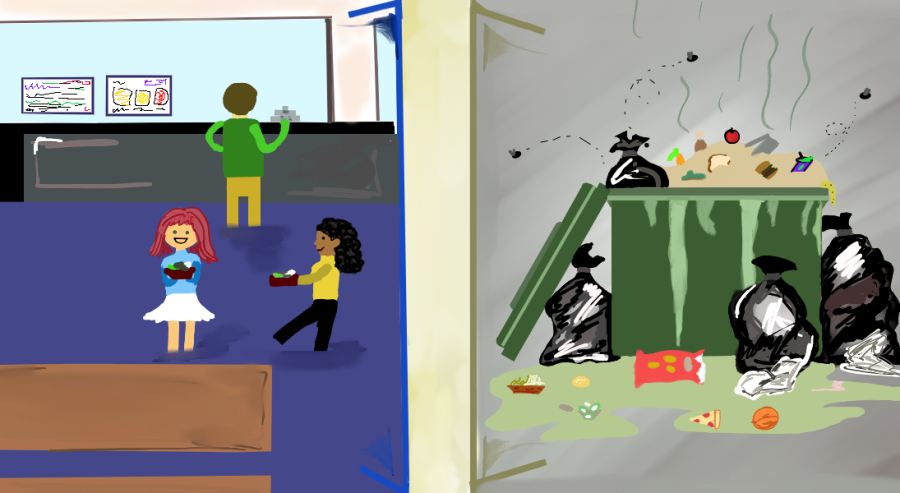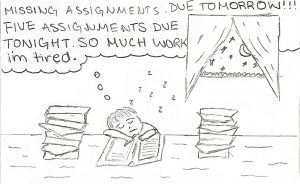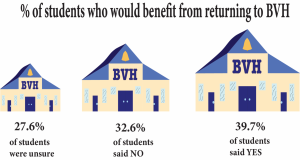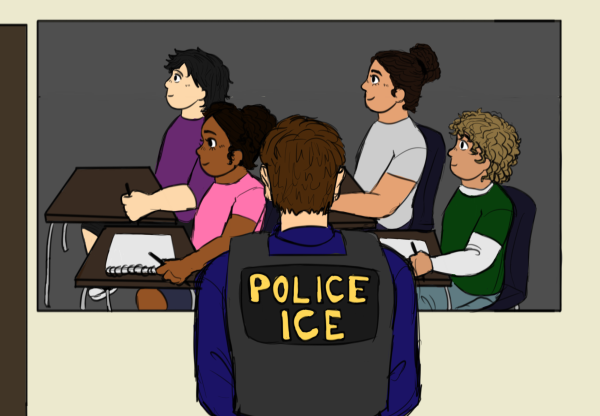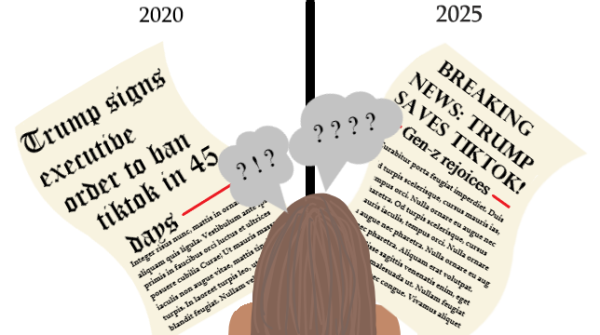Yes/No: Should schools provide free meals for students?
Schools in California, including Bonita Vista High (BVH), are providing students with free meals. Although there are positive aspects such as advocating for students’ health, there are negative aspects to these free meals like the increase of food waste which leads to climate change.
YES.
BY: Stephanie Liang
Schools in California, including Bonita Vista High (BVH), are now providing free meals: breakfast, lunch and snacks. When one looks at the whole idea, providing free meals to students will be the most beneficial to them and their families. Some reasons why schools should provide free meals are because students learn better on a full stomach, they will not have to worry about purchasing the food and they are happier when they have eaten.
To start off, with information from multiple studies, the National Education Association (NEA) states that hunger affects students’ academic performance and behavior. The studies show that hungry students have lower scores, have an increased chance of repeating a grade level and are more likely to be tardy or absent from school.
“Missing meals and experiencing hunger impair children’s development and achievement,” NEA said.
According to students at BVH, they have felt distracted due to being hungry. It becomes hard for them to focus in class when their stomachs are growling for their attention. It benefits the students if free food is given to them, so that they can finish the rest of their class instruction without hunger calling out to them.
On top of that, a lack of food causes behavioral problems. According to the article, “Going hungry: Student hunger affects behavior, learning” written by Meghan Gunther-Haas, Mecosta-Osceola Intermediate School District (MOISD) general education director Tonya Harrison said “When kids are hungry, they have an increased possibility for behavioral issues like hyperactivity, aggression or anxiety. Their moods can change.”
Furthermore, some students at BVH are not able to eat or pack themselves food for school because of financial issues. According to Educationdata.org, as of May 17 “California had the most [number of] children with school meal debt – 327,686 children.” To put it into context,, the national average meal debt is $170.13 yearly. The allocation of free meals ensures that every student can recieve and afford the food they need to efficiently learn and focus in class.
This means that families with financial problems will not be as stressed about whether or not they can afford the cost of school meals. According to the article, “Packing School Lunches is the Biggest Stressor for Parents” written by Ashley Wehrli, “Money is also a big source of stress for parents, as 58% said that they spend extra money on groceries while their child is in school.”
Along with preventing hunger and stress, nutritional meals are important for students’ health.. One health concern is obesity as “The rate of obesity among U.S. children has tripled in the past 30 years. Today, one in five American children is obese, which increases their risk of lifelong health problems such as heart disease and type 2 diabetes,” NEA states. “[…]school meals must meet federal nutrition standards[…]”
Since BVH’s school meals are nutritional, as they require all student to take a fruit and have salads on the menu, it’s even more beneficial that they are free. With more students able to get meals, they will also be able to live a healthier lifestyle.
Lastly, food is important for students to be happy. The article, “Understanding the Science of Eating and Happiness,” written by Julia Sweeney states that the sight, smell, and taste of food can release a neurotransmitter in your brain called dopamine, a chemical that makes one feel happiness.
“We’re innately pleasure-seekers, and studies like this one have shown that certain foods—such as sugar, salt, and fat—are potent natural reward-drivers,” Sweeney said.
Ultimately, students need to have the proper nutrition for a healthy lifestyle and it is greatly beneficial to those who cannot afford lunch everyday to obtain free meals at BVH. Students need free meals to be happy, to enjoy school and be successful while doing so.
NO.
BY: Grace Na, Opinion Editor
On Feb. 10, the bill advocating for all students in California to receive free school lunches, formally known as the Free School Meals For All Act of 2021, was first introduced. On July 9, it was signed into law by California’s Governor Gavin Newsom, Bonita Vista High (BVH) is one of the many high schools in California that are included in the bill that was enacted. Although many students benefit from the introduction of free lunch, it is a practice that should not be implemented because of the long-term consequences.
BVH students have witnessed some of their peers throwing the food they received from the cafeteria away even when it was untouched. With school lunches being provided for free, wasting food resources will be more common.
Food waste can lead to harmful impacts on the environment. According to “Fight climate change by preventing food waste,” by World Wildlife, when people waste food they also waste the energy and water that is used to grow, harvest, transport and package them. If it goes to the landfill and rots, it produces methane—a greenhouse gas even more potent than carbon dioxide. Methane is the primary contributor to the formation of ground-level ozone, which causes one million premature deaths every year.
About 6 to 8 percent of all human-caused greenhouse gas emissions could be reduced if food waste is prevented. In the US alone, the production of lost or wasted food generates the equivalent of 32.6 million cars’ worth of greenhouse gas emissions.
According to “School Waste Reduction Programs” by CalRecycle, schools in California generate about 562,442 tons of waste each year. These numbers will increase if schools continue to provide students with free meals. The amount of food waste caused by free meals will harm the environment by producing more heat and light energy. If schools are to truly advocate for a healthier planet, as student clubs like Green Team are already doing, then they need to take into consideration how free meals will be used by the student body.
Additionally, the investment in school lunches raises questions about the way schools distribute funding as well as what is taken as a priority. Currently, BVH needs to provide its students with an improved campus. That includes amenities like soap dispensers, trash cans, recycling bins and the reconstruction of several older classrooms. Instead of using the funds towards providing students with free meals that may ultimately go to waste, why not utilize it to improve school campuses?
BVH’s students’ complaints regarding the lack of general supplies provided to them by the school could be addressed by distributing funds in a more strategic manner which is more likely to benefit the student body.
Even though there are many students currently benefiting from free lunches, prior to the bill getting approved, students in low-income families were able to fill out the National School Lunch Program application, which allows students to eat school lunches for a reduced price or free. Allowing students to continue submitting this application would give schools the opportunity to save more money on school meals.
The bill was passed with the positive intention of supporting students during the pandemic; however, providing students with free meals only serves to increase food waste which harms the environment. In order to support students in the best possible way, schools should consider using the funds towards improving classrooms and campuses.

As a senior and Editor-in-Chief of BVH’s the Crusader, I hope to guide the publication to continue publishing articles that have an impact on our community....

Hi! I’m Stephanie Liang, a staff artist for The Crusader. This is my first year on staff, and I’m a freshman at Bonita Vista High School. I joined...

